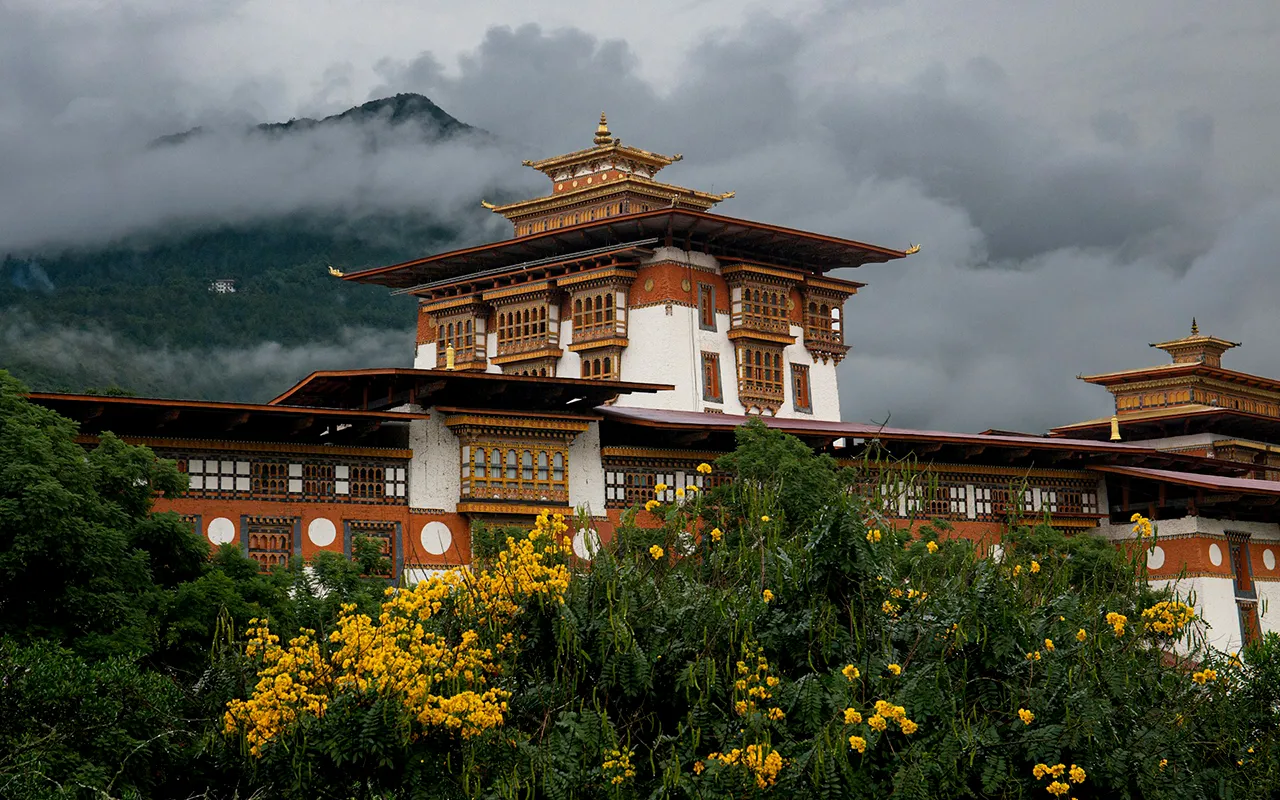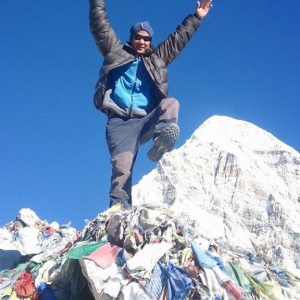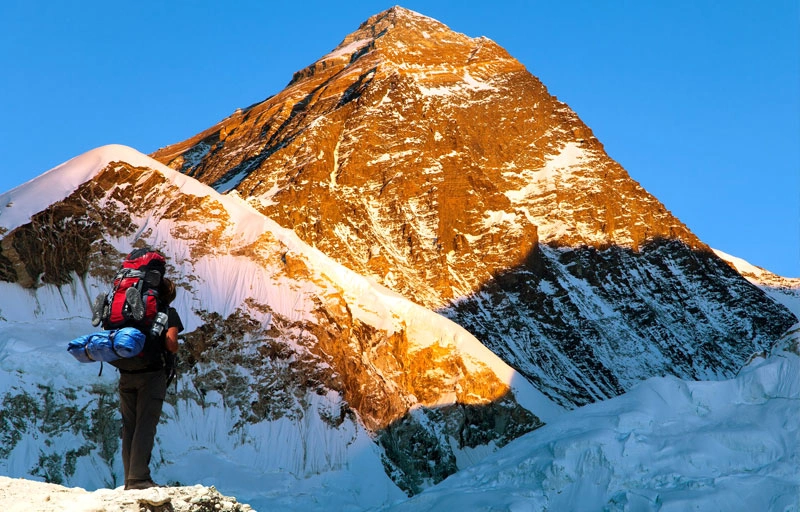Punakha Dzong Travel Guide: History, Architecture and Spiritual Beauty
Table of Contents
Introduction
Punakha Dzong, also referred to as the Palace of Great Bliss, is an impressive fortress/monastery situated in Bhutan. It is an important historical representation of the cultural and spiritual heritage of the Bhutanese people. This is the iconic dzong, which fascinates people with its magnificence.
The dzong is located at the confluence of the Pho Chhu and Mo Chhu, and the riverside location gives scenic beauty to the dzong. The running waters bring in a serene atmosphere, which is a naturally beautiful and calm environment to the dzong.
Being the second-oldest dzong built by Zhabdrung after Simtokha and the second-largest dzong in Bhutan, Punakha Dzong has tremendous architectural significance. The locals and visitors believe that it is the most beautiful dzong because of its complex construction and splendid appearance in the lush valley.
More than physical beauty, Punakha Dzong is an important cultural and spiritual symbol. It hosts key religious ceremonies, royal activities, and historical events, and has kept the rich culture of Bhutan and which is a source of national pride.
Historical Background
Punakha Dzong was constructed in 1637 by Zhabdrung Ngawang Namgyal, who brought Bhutan together. This tactical fortification represents the unification of Bhutan under Zhabdrung Ngawang Namgyal.
Punakha Dzong serves as the administrative capital of Bhutan, being used as the administrative and religious center of the Bhutanese government for centuries until 1955.
Recognized as the dzong for some of the historical events was the coronation of the First King of Bhutan in 1907. This was the beginning of the official hereditary monarchy that increased the national identity and political stability in Bhutan.
The royal wedding of the Fifth King in 2011 was another event held in the dzong, which depicts continuity and tradition. As royal and national events are held there, this makes the Punakha Dzong even more significant.
In addition to political history, Punakha Dzong also holds religious value, such as the Rangjung Kharsapani, a sacred self-manifested image of Avalokiteshvara brought from Tibet. The relics also help in the spiritual value of the dzong, attracting pilgrims and the Bhutanese religious heritage.

Location and Setting
Punakha Dzong is located in a scenic Punakha Valley, which is elevated at approximately 1200 meters. It is located at a moderate elevation that gives it a favorable climate, hence accessible and comfortable to visitors all through the year.
The dzong is situated at the meeting point of the Pho Chhu and the Mo Chhu rivers. These rivers are the representation of the unity of masculine and feminine forces, which increases the spiritual and cultural value of their place.
It is about 72 kilometers away from Thimphu via Dochula Pass (3,100 m), requiring a period of three hours by road. The road is traversed by the picturesque Dochula pass, which has immense panoramic views of the Himalayan mountain range.
It is topped off by a journey across the wooden cantilever bridge across the Mo Chhu River. The classical bridge offers a scenic and immersive experience between the visitors and the historical and cultural ambiance of the dzong.
The most appropriate time to visit is the spring (March to May). They have colorful purple flowers (Jacaranda) that form a beautiful background of Punakha Dzong, creating one of the most photogenic scenes in Bhutan.
Architectural Marvel
Punakha Dzong is a display of traditional Bhutanese architecture, which has been constructed without using nails. Its elaborate woodwork and its whitewashed walls demonstrate generations of craftwork and Bhutan’s reverence for the past.
The architecture of the dzong boasts multi-tiered golden roofs and tall whitewashed walls, which are very elegant in their look. Intricate murals and wood carvings decorate both the exterior and interior, portraying Buddhist deities and symbols.
The interior of the dzong has the most important buildings, including the Central Utse, or the central tower that represents the spiritual power. The Kuenrey (Assembly Hall) is used for religious gatherings and major community gatherings.
Various courtyards in Punakha Dzong are used to accommodate various functions such as monk quarters, administration, and ceremonies. This layout corresponds to the position of the dzong as a religious center and a seat of government, carrying spiritual hierarchy and unity.
Punakha Dzong has been damaged by fires (1780, 1849, 1986) and floods (1994), but its strength is quite impressive. It has been reconstructed numerous times, keeping its original style and significance.

Spiritual Significance
The Punakha Dzong is a place of sacred relics of Guru Rinpoche, Zhabdrung Ngawang Namgyal, and other sanctified lamas. The embalmed body of Zhabdrung is housed inside, which helps make this dzong a sacred pilgrimage site. The presence of these relics makes it a sacred space, helping to draw pilgrims and preserve the rich traditions and doctrines of Buddhism in Bhutan.
In addition, the dzong is the winter residence of the Central Monastic Body of Bhutan, and the Je Khenpo is the Chief Abbot. This time of the year highlights its current religious relevance and relates to the Bhutanese monastic leadership and religious traditions.
Punakha Dzong hosts some of the largest Buddhist festivals, including the Punakha Dromche and Punakha Tshechu. These colorful festivals are a combination of religious festivals and cultural festivals, as they attract the locals and the tourists to enjoy the Bhutanese spiritual practices.
The dzong is the symbol of the spiritual harmony of Bhutan between religion and the government. The monks’ chanting echoes in its halls, complemented by the calmness of the running rivers, making the atmosphere of the place a soothing and sacred one.
Festivals and Cultural Events
Punakha Dromche is a commemoration of the ancient Bhutanese triumph over the Tibetan invasion of the country in the 17th century. Traditional warrior dances re-enact Bhutan’s 17th-century battles and celebrate national unity.
Punakha Tschechu involves religious dances with colorful masks and other religious festivals to celebrate Guru Rinpoche, who is a great saint of Bhutan. The dances relate sacred stories of spirituality and moral values and are undertaken in a vibrant, colorful manner, making it a meaningful celebration that brings the community together.
Both of these festivals are usually held in February or March according to the Bhutanese lunar calendar. Travelers will be able to embrace the Bhutanese spiritual culture, heritage, tourism, and joy of celebration, all while assembled at the magnificent fortress, Punakha Dzong, which creates a magical feel to the many celebrations.
How to Visit Punakha Dzong
The road from Thimphu to Punakha passes over Dochula Pass (3,100 m). The road is stunning with the Himalayan scenery and usually forms part of the cultural tours connecting Thimphu, Punakha, and Paro.
Tourists are expected to follow the regulations of entry that focus on the Bhutanese traditions. Long-sleeved and full-length dress code is mandatory, and hats, sunglasses, and photography are prohibited inside temples and sanctums out of respect for their sacred nature.
The dzong is usually kept open between 9:00 AM and 5:00 PM, but can be closed when there are special ceremonies. Visitors pay the Sustainable Development Fee (SDF): US $100 per adult per night; US $50 for ages 6–11.
Nearby Attractions
One of the longest suspension bridges in Bhutan is the one located near Punakha Dzong, and it measures 160 meters. The strolls provide a spectacular scenery of the rivers and the valleymakinges the visit exciting.
A scenic walk of a few minutes away can take one to Chimi Lhakhang, also known as the Temple of Fertility, accessible near the dzong. There are numerous pilgrims and visitors to gain spiritual and cultural understanding.
Khamsum Yulley Namgyal Chorten, built by the Queen Mother to promote world peace, is a great stupa located at the top of Punakha Valley. The presence of an elaborate architecture and a calm environment makes it a relaxing place to reflect and take photographs, which makes the entire experience of cultural tourism a wonderful one.
Dochula Pass is situated on the way between Thimphu and Punakha, and it provides a wide view of the Himalayas. The pass offers panoramic Himalayan views and 108 memorial stupas built in honor of Bhutanese soldiers.
Best Time to Visit
Punakha Dzong is best visited during spring (March-May). This season is also characterized by fertile and green valleys with luminous jacaranda trees that are in bloom, thus offering a colored and scenic picture to visitors.
Another suitable time is autumn, which is between September and November. The skies are clear and visibility is good for sightseeing. The monsoon months (June–August) bring heavy rain and possible road closures.
The monsoon season (June-August) is avoided because of the high rainfall and road blockages. Winter (Dec–Feb) offers clear skies and fewer visitors, ideal for serene exploration.
Photography and Travel Tips
Punakha Dzong is best viewed from the opposite riverbank near the Pho Chhu Bridge, in either the sunrise or sunset. Naturally, at these periods, the color of the dzong and the reflection of the river are enhanced by the soft natural light, producing impressive images.
The wide-angle lens is strongly suggested in order to get the whole dzong and its reflection in the river. This point of view highlights the size and the environment of the fortress within one magnificent frame.
Visitors must never take photos in temples or other restricted locations without seeking the consent of the guide. Cultural sensitivity with respect to local practices and religion makes it a pleasant experience for both the community and the visitor.
To enhance the experience, consider timing your visit with Punakha Tshechu or joining a cultural tour for a deeper experience. Attending events such as Punakha Tshechu or simply exploring other local cultures will help you learn more and experience Bhutanese heritage and spirituality in practice.
Conclusion
Punakha Dzong is one of Bhutan’s most remarkable landmarks that combines a rich history, gorgeous architecture, as well as profound spirituality. The splendid architecture shows the artistic legacy of Bhutan, its architectural brilliance, and its rich religious background, which the country and its people have followed over centuries.
The dzong is a living monument to both spiritual and political Bhutanese heritage, in which the unity of religion and government is combined. It is still essential to the Bhutanese culture, rituals, and national identity, which bridges the past and the present. The visitors are requested to visit Punakha Dzong respectfully and with an open mind. The experience of being involved in its culture is a life-changing one, revealing the essence of the Bhutanese culture and hospitality.





